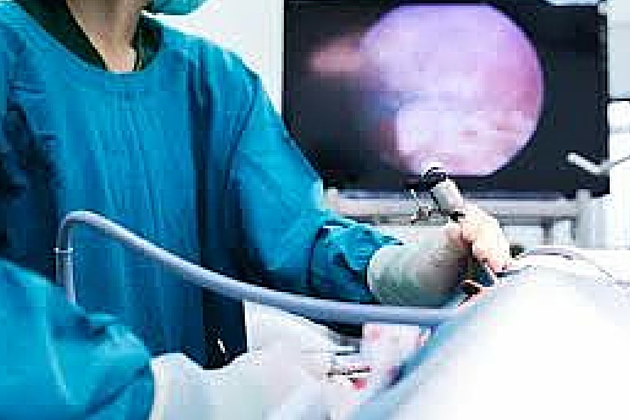Fibroids are benign muscles growths and they develop in uterus and rarely in ovaries, near the cervix or in uterine ligaments.
They cause fertility problems, pain and bowel dysfunction if are large enough. Also, in some cases, they may cause pain during intercourse and urinary problems.
A very common symptom is heavy periods.
What is myomectomy?
Myomectomy is the surgical removal of fibroids from the uterus.
Myomectomy can be performed making a big incision through the abdominal wall (like the incision of cesarean section) or laparoscopically.
Fibroids located in the lining of the womb (endometrium) are removed hysteroscopically.
What is laparoscopy?
During laparoscopy procedure are performed 3-4 very small incisions in the abdomen (tummy) (usually they have 1 centimeter diameter each).
Laparoscopic instruments and a camera are put through these incisions.
The doctor put gas into the abdomen in order to see clearly and to have more room to work.
The camera sends the images onto a high-definition screen and it provides us a clear view of the area using high magnification.
At last but not least, the sutures (on each incision) are subcuticular and they get absorbed by the body so it is not needed to be removed by a doctor.
How does the doctor remove fibroids during laparoscopic myomectomy?
Special instruments are inserted in the abdomen through small abdominal incisions and they cut fibroids in smaller segments.
After this procedure, the surgeon removes these segments through the same incisions.
Why is laparoscopic myomectomy recommended?
- Short hospitalization time (usually you discharge from the hospital a day after the procedure)
- Rapid recovery and return to normal activity
- Significantly less post operative pain
- The incisions are less than 1 centimeter, so the cosmetic result is better
- It is a safe procedure with few post operative complications (including infections)
- At the same time of the surgery, the doctor can closely examine the abdomen organs due to high definition images and the visual magnification
- Improvement of fertility rates
Why should myomectomy be performed laparoscopically; especially in women with infertility problems?
If fibroids are accompanied by infertility problems, they can be performed: laparoscopic tubal patency test, check of ovarian morphology and volume; and mobilization of tubes and ovaries at the same time.
These particular laparoscopic manipulations improve the fertility rates and increase the reproductive ability to conceive naturally or through assisted reproductive technology.
How do I decide which option is better for me?
Consult Dr. Marinakis a specialist Gynecologist - Endoscopic surgeon.
Doctor should examine you in order to be assured that there is an indication for a Laparoscopic surgery.
If they have discouraged you from Laparoscopy, and you do not have enough information not only about the indications of the procedure, but also about your plan of treatment, you might have been in the wrong place!
Overall, laparoscopy is a really safe procedure; however every single medical procedure is safe only if it is managed by a specialist.
Gynecologist Dr. Marinakis specialises in gynecological hysteroscopy. He is certified in advanced laparoscopy and hysteroscopy by Royal College of Obstetricians and Gynecologists. He was also a member of Laparoscopic training unit “MATTU” in United Kingdom.
How much does a laparoscopy cost?
The cost of a laparoscopic procedure is low and it usually depends on your health insurance cover.






